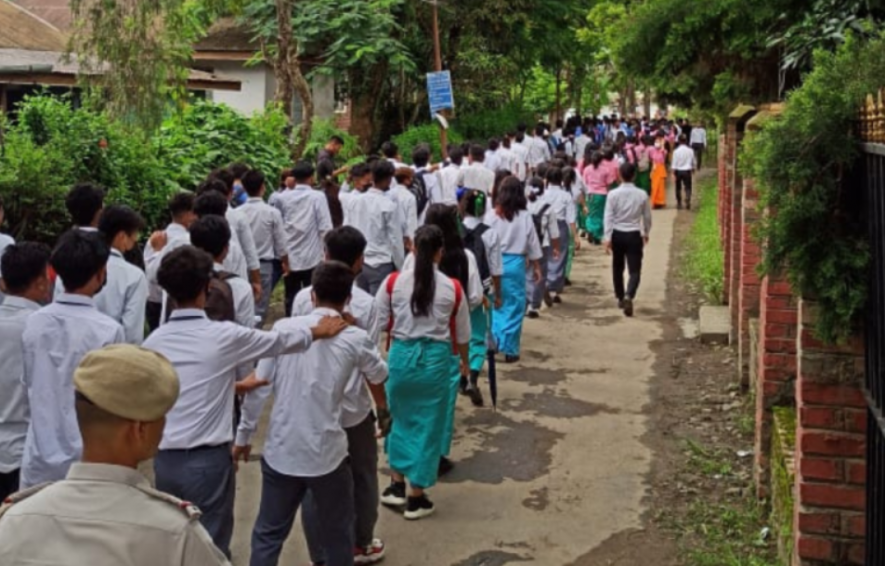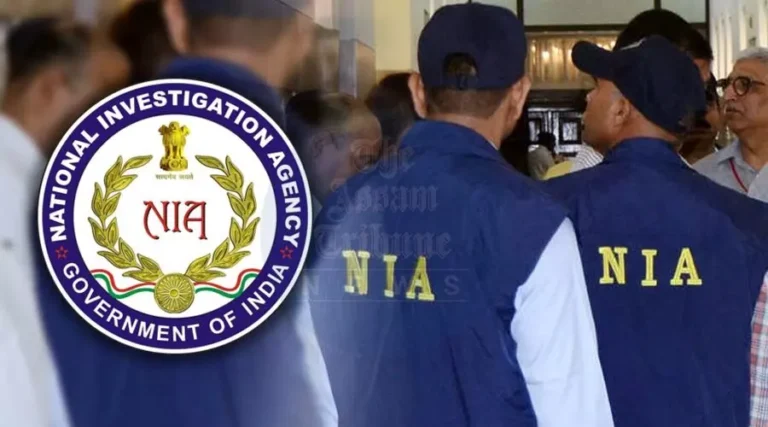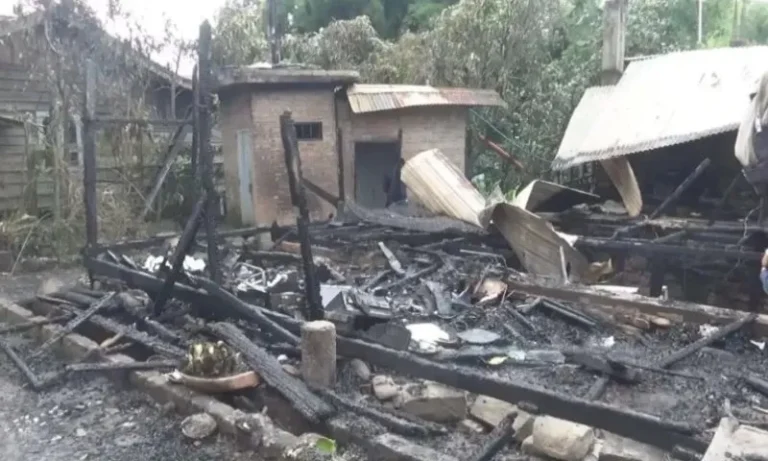MANIPUR: STUDENTS AND VILLAGERS UNITE IN KAKCHING TO PROTEST CRUMBLING ROAD, SET AUGUST 13 DEADLINE FOR REPAIR
SHORT SUMMARY OF THE INCIDENT
On August 6, 2025, hundreds of residents of Irengband village in Kakching district, Manipur—led by school and college students—gathered to demand urgent repairs on the 5.2-km Irengband–Kakching–Tekcham Road, left in disrepair for over 16 years despite repeated promises under the Pradhan Mantri Gram Sadak Yojana (PMGSY). Protesters, holding placards and chanting slogans, warned that if no action is taken by August 13, they will take matters into their own hands and begin self-repair work, highlighting how the broken road affects daily life, education, commerce, and emergency services for 680 households.
A LIFELINE TURNED NIGHTMARE
Have you ever felt like the road you travel every day is more like an obstacle course than a path to opportunity? For the people of Irengband village, the Irengband–Kakching–Tekcham Road is supposed to be their lifeline—a route to school, work, markets, and hospitals. Instead, it’s a maze of potholes, mud patches, and slipperiness so treacherous that even daring motorcyclists think twice before venturing out.
But why has a simple rural road been left to decay for more than a decade and a half? And what makes today’s protest different from the many petitions and assurances that came before?
This article unpacks how students and villagers in Kakching are rewriting the script—transforming helplessness into collective action, and setting a deadline of August 13, 2025 for authorities to finally deliver on their promises.
A ROAD WITH A 16-YEAR GRUDGE
History of the Irengband–Kakching–Tekcham Stretch
Back in 2009, the central government’s PMGSY initiative earmarked the 5.2-km stretch between Irengband and Tekcham as a “feeder road,” vital for linking remote villages to the national highway network. Initial surveys and “tender floated” announcements sparked hope: farmers would get their produce to market faster; students could reach schools without risking life and limb; ambulances would save precious minutes in emergencies.
Fast forward to 2025, and one look at the cracked tar, yawning potholes, and washed-out embankments reveals that those early plans never materialized. The road that was meant to carry dreams has instead become a daily nightmare.
STUDENTS RISE: WHEN TOMORROW’S LEADERS TAKE TO THE STREETS
From Classrooms to Chalk-Dust Protests
What happens when students—whose very future hinges on safe passage to school—get fed up? They organize. School and college students in Irengband have for months documented the road’s collapse on their smartphones: videos of overturned bicycles, testimonies from elderly villagers trapped by mudslides, and live streams of toddlers trying to cross waterlogged stretches.
On August 6, they marched shoulder to shoulder with parents and grandparents, carrying handwritten placards saying, “Blacktop Our Road—Not Our Hopes,” and chanting slogans like “Irengband Deserves Better!” Their energy and unity turned heads—even political observers noted that when youth lead, authorities can’t simply ignore the uproar.
Student Voices: “This Is Our Future at Stake”
“Every time I ride my scooter, I wonder if I’ll make it to school alive,” says Nongthombam Devi, a 17-year-old high-schooler. “Studying for exams is hard enough—dodging potholes shouldn’t be extra homework.”
For college freshman Samuel Tombi, the road is more than a daily commute—it’s the difference between attending lectures and missing them altogether. “One flat tire costs me a whole day’s travel money. How am I supposed to focus on assignments if I’m worried about breakdowns?”
These voices add a poignant layer: the crumbling road is robbing students of precious time, resources, and peace of mind—an insidious form of educational inequality.
TURNING THE TIDE WITH TIMELY ACTION
The Irengband–Kakching–Tekcham Road protest is more than a demand for blacktop—it’s a clarion call for accountable governance, youth empowerment, and grassroots resilience. As the August 13 deadline looms, villagers and students stand ready with tools in hand, unwilling to wait another decade and a half for progress.
Will authorities heed this cry, or will Irengband once again pave the way for hollow promises? The answer lies not in dusty bureaucratic files, but in concrete action—ideally before the village’s self-repair brigade rolls up its sleeves.
❓ FAQs
1. Why is the Irengband–Kakching–Tekcham Road so important for the village?
This 5.2-km stretch connects Irengband to the wider highway network, enabling access to schools, markets, hospitals, and emergency services—vital for the daily lives and economic survival of over 680 households.
2. What is the Pradhan Mantri Gram Sadak Yojana (PMGSY)?
PMGSY is a central government scheme launched in 2000 to provide all-weather road connectivity to unconnected rural habitations, aiming to transform rural infrastructure and boost socio-economic development.
3. How can villagers legally undertake self-repair if authorities fail to act?
While well-intentioned, self-repair on government roads can lead to legal issues. Ideally, villagers should issue formal notices and partner with PWD under a memorandum of understanding to carry out community-led maintenance approved by authorities.
4. Are there successful models of community-PWD collaboration?
Yes. In Sikkim, village panchayats appoint “road caretakers” who routinely inspect roads and report issues directly to PWD via a dedicated mobile app—ensuring prompt minor repairs and robust long-term upkeep.
5. What can concerned citizens or NGOs do to support Irengband’s cause?
They can amplify the protest via social media, facilitate dialogues between villagers and officials, provide technical expertise in rural road engineering, and lobby for policy reforms that guarantee accountability and timely maintenance under PMGSY.




